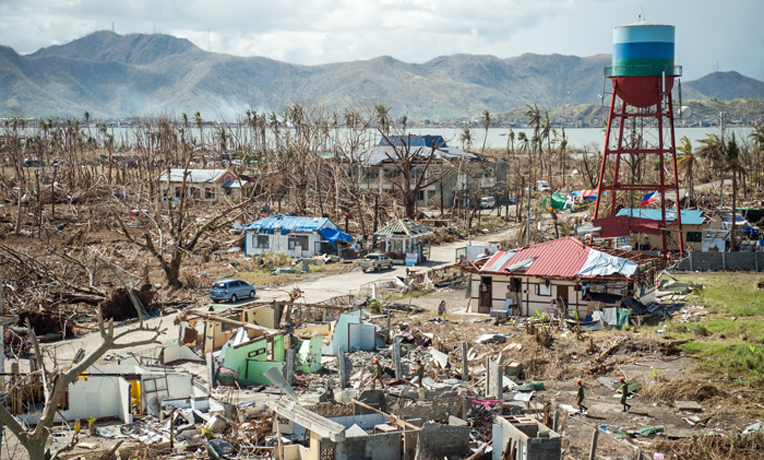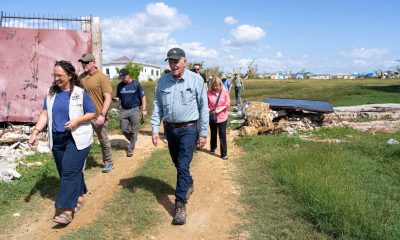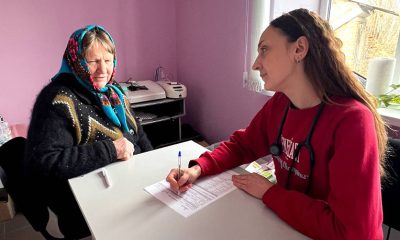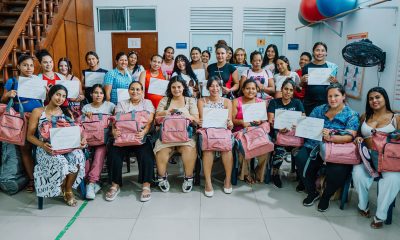The scope of the devastation can be overwhelming, but the Samaritan's Purse team is thankful to serve typhoon victims
By Ken Isaacs, Vice President of International Projects and Government Relations for Samaritan’s Purse.
The rain is falling so hard that the sound of the panging on the sheet metal roofing makes sleep impossible. I hear the movement of others on the floor and around the corner and I know I am not the only one who has woken up.
Water is falling from the trusses and cascading from the floor above into the floor we are on. We are lucky, though. Our place is relatively dry. My heart breaks for the 4 million who have lost their homes and have only a scrap of tin and sticks by which to fashion a shelter of some sort.
I have seen hundreds of thousands of them in the last three days.
Typhoon Haiyan is like nothing I have ever seen. Along the coast it show signs of destruction that I can only compare to the tsunami in Japan three years ago. From the snapped trees and war zone-like destruction it reminds me of what I saw in Mississippi and Alabama a few years ago. From the sheer path of the storm it reminds me of Hurricane Andrew, which devastated South Florida in 1992.
I have never seen a storm that destroyed so much, so totally, and in such an unbelievably wide swath as Haiyan has done. News reports say it has left more homeless than Katrina and the Indonesian tsunami combined.
I believe that after doing aerial recon for two days, watching for the roads to be opened. From above I saw the thousands of square miles of destruction. Forests are leveled. Villages are erased. Debris-strewn areas are all that remain of what used to be neighborhoods, fishing towns, and commercial centers.
There are more people homeless than I’ve ever seen from a natural disaster. That’s saying a lot for me. I have been responding to disasters for 25 years so I have seen more than I frankly want to remember.
It’s been a little over two weeks since the storm exploded like a 200-mile wide freight train moving across the country and leaving little but miraculous tales of survival by clinging to ceiling joists or a block wall. There are also too many stories of the last time a loved one was seen and not heard from again. By now, no one is expecting to find happy endings.
Today I drove into eight communities that line the ridge of the mountains on the north/south axis of Leyte, the province island where Tacloban sits. People asked me for nails, hammers, plastic tarps, doctors, food, water, and prayer. Not in that order in every village, but those items in every village.
When I came back to the coast I drove through Talosa and Tanauan. Ground zero. People are working to put shelter over their heads by salvaging bits and pieces from rubble. Signs everywhere are asking for help. Food and water, mostly.
Not all of the areas have everything they need. The media is gone, but the need remains. Getting to this eastern side of the Philippines isn’t easy and there are less relief agencies here than I expected.
The Samaritan crossed the road to help the man in the ditch. He washed the wounds, bandaged them, took the man to an inn and took care of him. He didn’t ask him what he believed, who he voted for, or who he was related to. He crossed the road and gave help. Then and there.
That’s what we do at Samaritan’s Purse. I love being a part of that. In the midst of crisis I am blessed to be a small part of Jesus’ hands and feet. I am blessed to minister to others in the name of Jesus Christ and I know God will use that for His Glory in ways I can never imagine.
The rain has stopped to a steady drip now inside the walls and on the floors of the hotel where our team of 50 are sleeping tonight. This hotel’s roof is also gone. There is no water, no electricity, no windows, and now wet floors. But at least I am dry on the bed and I have something to lay on other than the wet ground.
I am grateful to God to be here. I’m grateful to God for the people who give and pray for Samaritan’s Purse so we can be here.
It’s 4:30 now. Maybe I can sleep another hour before the team’s day starts.
There is so much to do.






